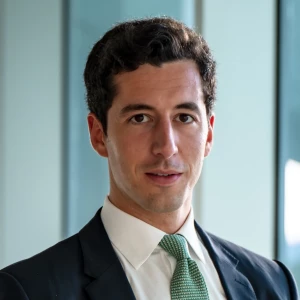I heard McK has 3 questions: structure, exhibit and math..so where does the brainstorming come in? Would this be a 4th question?
McK brainstorming


The three sections are structuring, conceptual thinking and quantitative thinking. Although it could be away to approach conceptual thinking, McKinsey is not testing for one’s ability to just brainstorm. They are looking for your ability to conceptualise a problem; showing meaningful creativity and judgement in a synthesised way. An exhibit is also merely a tool test conceptual and/or quantitative thinking.

Hey there,
Brainstorming is just another form of structuring, following the same rules. I'll make this clearer in this article here:
https://www.preplounge.com/de/mckinsey-interview
Cheers,
Florian

Hi! Probably what you heard is what are the types of questions being asked. Brainstorming is basically a type of open question e.g., how do you think you could attract international candidates to a masters programme? Here you are expected to come with an answer based on your own knowledge and business acumen, while using the little information provided in the context of the case.
However, brainstorming and structuring for instance, are not mutually exclusive. You are always expected to be structured even when providing an answer to an open question. So you'd respond, there are three areas that I would consider, … then take each of them and delve into more detail. Good luck!

Hello,
Brainstorming is one of several different question styles they could ask you (alongside the ones you mentioned + market sizing). While these are the general “components” in the case, you might not always get all of them in a case interview, or get them in different orders. Brainstorming questions are similar to structured questions except that you are not given time to think about your answer and should go off the top of your head. But essentially you should approach it in a similar way as you would approach a structured question.

Hi there,
This is indeed an interesting question which is probably relevant for quite a lot of users, so I am happy to provide my perspective on it:
- Generally speaking, there is no defined number of questions you might get asked in McKinsey interviews and formats within the case study might differ. Based on my own experience, the ones of my coachees and of my personal network, you will most probably encounter 3 to 4 formats in total.
- Besides the three formats you mentioned (1) structuring, 2) exhibit analysis, 3) quantitative questions) you might also encounter brainstorming questions (i.e. qualitative questions) and marketing sizings.
In case you want a more detailed discussion on how to best prepare for your upcoming McKinsey interviews, please feel free to contact me directly.
I hope this helps,
Hagen



Please do not consider this rigid an approach to preparation. The actual interview questions could be in a different order and be different in count.
Further, brainstorming can be one ‘type’ of question by itself - or be an extension to an existing question whereby the interviewer asks you to add more ideas, or enhance your framework, or something else.

Hi there,
This is extremely dangerous thinking - there are not 3 and only 3 questions that will be asked in each McK interview along those exact lines.
Make sure you're not trying to predict exactly what will happen in these interviews, but rather learn how to be flexible and adaptable no matter what happens.
McK does indeed test structuring, chart/exhibit reading, math and brainstorming, so make sure you're ready for these. However, be ready for them in any order, manner, and combination!

This is an oversimplification, which I don't find very useful. You need to go a layer deeper and understand the things that can fit in those “only” 3 types of questions.
In fact, brainstorming is a structuring question. But also you can have math on exhibits. And on math you need to structure.

Hi!
Brainstorming encompasses different skills tested by your interviewer and it generally refers to your ability to come up with a structured approach to a business problem. For example, when you lay down your initial structure you are actually brainstorming, so it is not a “fourth question”.
Hope this helps.
Best,
Anto















